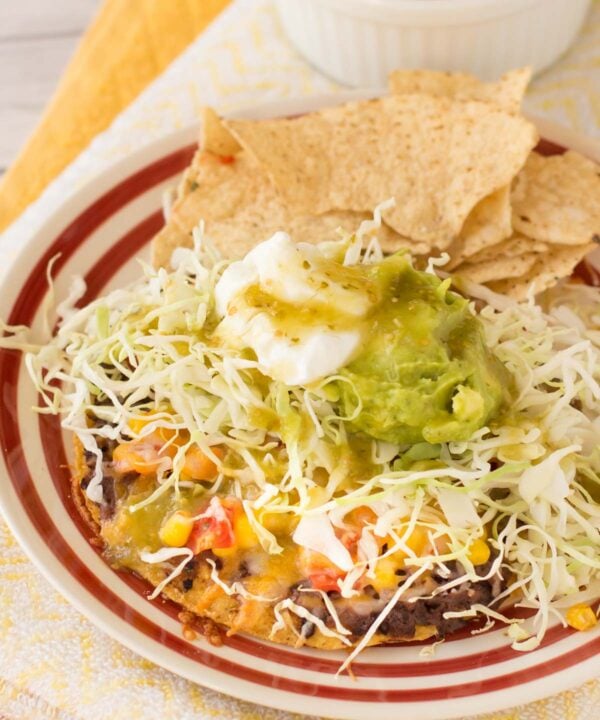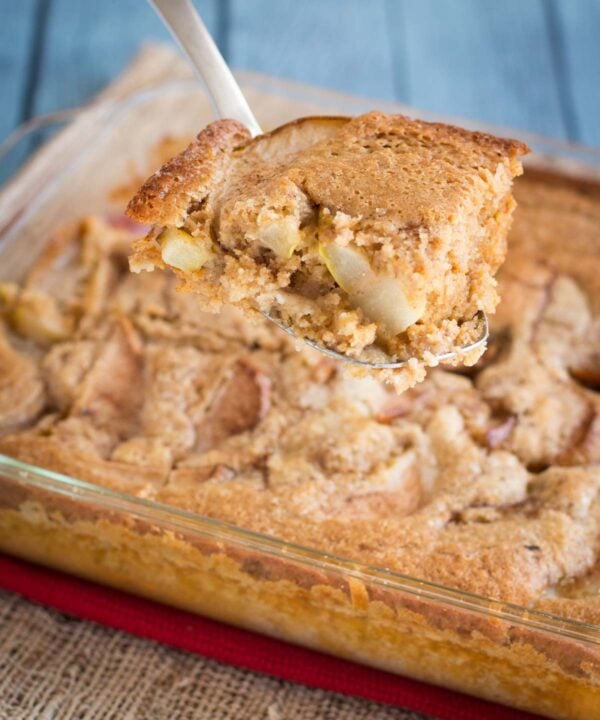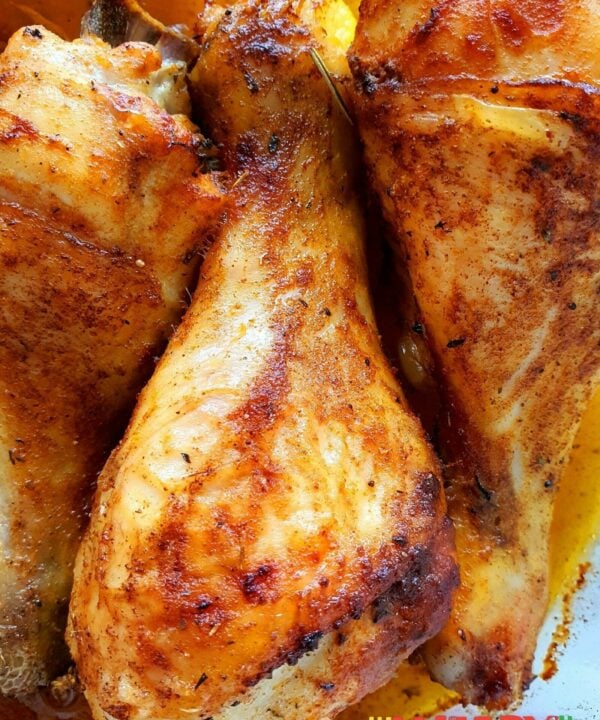Learning how to cook a turkey may seem like a daunting task for beginners. However, if it’s your first time cooking this bird, don’t worry, because in this article, we’ve broken down the complex process into a few simple steps that will help you understand how to cook a turkey excellently. Take a look at the procedure and read on to discover some tips and tricks about how to cook a turkey.
How to Cook a Turkey | The Basics
If you’ve always wondered how to cook a turkey perfectly, these basic steps can help you out.
1
Choose the Turkey Well
A huge part of learning how to cook a turkey is getting the bird right. One of the first things that determines this is the size of the turkey. Typically, it’s best to pick a bird that can offer at least 1 pound per person. Some seasoned chefs or home cooks also choose larger birds that yield around 1.5 or 2 pounds per person, so they have leftovers to make other dishes. Another important factor you need to consider is the type of turkey. To do this right, you’ll need to familiarize yourself with labels like fresh, frozen, brined, seasoned, organic, or kosher turkeys. All of these are self-explanatory, so you’ll just need to decide on the right type.
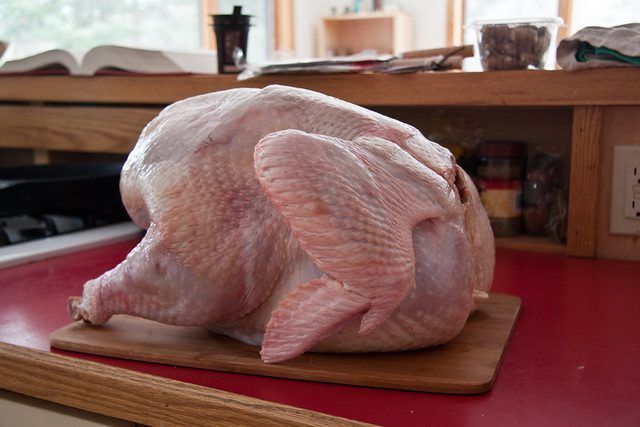
Image: CC BY-SA 2.0, Tim Sackton, via Flickr
2
Get Your Ingredients and Essentials Ready
The next important thing is to get your ingredients prepped. While the ingredient list typically depends on the specific recipe you’re following, some elements are common across most recipes. For starters, you’ll need a generous roasting pan to accommodate the turkey comfortably without having it spill over the sides. You’ll also need kitchen twine if you choose to tie the legs together. Other essentials include a pop-up timer, a meat thermometer, chicken stock, butter, and vegetables and herbs like onions, carrots, celery, sage, rosemary, or any other options that you prefer.
3
Prep the Turkey Right
Clean the turkey and get rid of parts like the neck, stomach, and heart, leaving a cavity inside the outer skin. Once this is done, you need to wash the turkey thoroughly in cold water and dry it completely. Removing all the water ensures that the skin is dry enough to cook well under the heat. It also allows you to get a crunchy and crisp exterior once the turkey is cooked. This is particularly important if you’re following a recipe that requires a crusty skin instead of a soft and juicy one. Also, drying the turkey thoroughly allows the flavors to remain concentrated, and keeps them from weakening due to the presence of extra water.
4
Season the Cavity
Adding the ingredients to the cavity is the next step in learning how to cook a turkey. Start off by holding the legs apart so you can access the center of the turkey better. Sprinkle as much salt as is required by your recipe, or as much as you’d like to include. You can also add other elements of seasoning, like pepper, rosemary, sage, or oregano. The kind of seasonings depend on your personal tastes as well as on the recipe you’re making. Once you’ve added the salt and the herbs, you need to stuff some aromatic vegetables inside the cavity. Onions, carrots, and garlic are some common choices. Some recipes require you to add fruits instead.
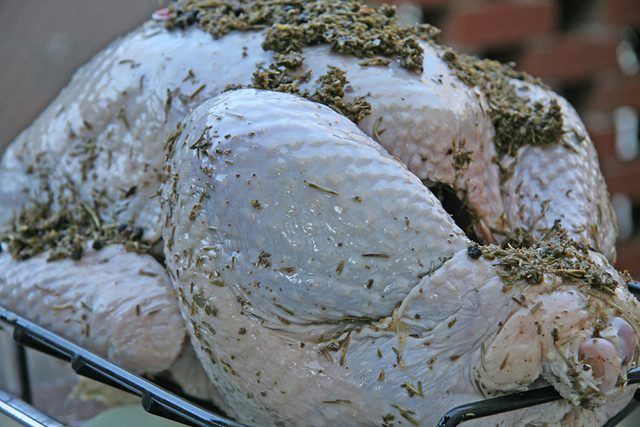
Image: CC BY-SA 2.0, Ivy Dawned, via Flickr
5
Tie the Legs
Popularly known as trussing, tying the legs of the bird is the next step in learning how to cook a turkey. The necessity of this step is often debated by home cooks as well as by professional chefs. While some people believe that trussing allows the heat to distribute across the bird evenly, thus resulting in better and more thorough cooking, others are of the opinion that tying the legs can, in fact, have the opposite result. However, one thing remains unchallenged, and that is the fact that trussing makes the turkey look more presentable. So, depending on whether you’d like to tie the legs, trussing may be the next thing you need to do.
6
Flavor the Skin and the Meat
Seasoning the cavity alone isn’t enough. For a truly delicious result, you’ll want to add the right flavors to the skin and the meat. To do this, try to pry between the outer layer of the skin and the inner layer of the meat with your fingers. Some cooks also use a spatula to help speed the process along. Since the outer skin is quite thick, you can succeed in prying it apart from the meat without any tears if you go about this step slowly and steadily. Spread butter and herbs between the skin and the meat and add other elements like garlic or lemon juice if you prefer those ingredients.
7
Season the Skin
Once the inner side of the skin is flavored adequately, it’s time to move on to the outer side. Ideally, you could rub some of the leftover butter over the skin so that you have a uniform flavor on both sides. At this point, you’ll see that drying the turkey initially plays a huge role in how well butter and other seasonings stick to the turkey. Having any stray bit of moisture may result in uneven seasoning, and this could eventually make the flavors imbalanced once the turkey is cooked.
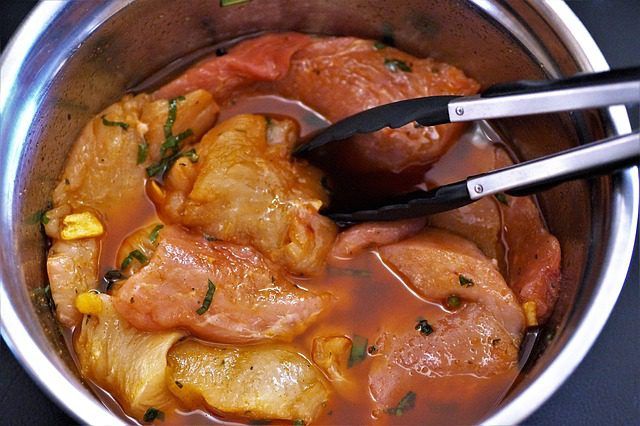
Image Source: Pixabay.com
8
Get On with the Roasting
The general rule of thumb is to roast the turkey at 325°F. The time typically pans out to around 20 minutes per pound of meat. So, a 12-pound turkey will take up to 3 hours to be entirely cooked, while a larger turkey that weighs around 24 pounds will require almost twice as much time. You need to use a meat thermometer to ensure that your bird is cooking well. Ideally, it’s advisable to keep roasting the turkey until the thigh meat, which is one of the thickest portions, is at around 165°F. Also, it’s important to loosely cover the buttered area with foil, as it prevents the skin of the meat from being burned. You can remove the foil when there’s an hour left for the cooking to be completed.
Tips and Tricks to Cook a Turkey Like a Pro
Now that we’ve covered the basics of how to cook a turkey, let’s take a look at some tips that can help you get the job done really well.
Tie the Legs Loosely
Since the whole concept of trussing is quite debated, deciding whether to tie the legs can be a tough choice to make. So, to get the best of both worlds, it’s best to tie the legs loosely. This way, you can ensure that the meat is well-cooked, and you can also have a presentable turkey ready on the table.
Thaw the Bird Well
If you opt for a frozen turkey, it’s important to allow the meat to thaw well. Most new cooks tend to underestimate the time needed for the bird to thaw. It can take a day or two for the ice to entirely go away, and even then, it’s best to run the meat under warm water before you begin to prep the bird.
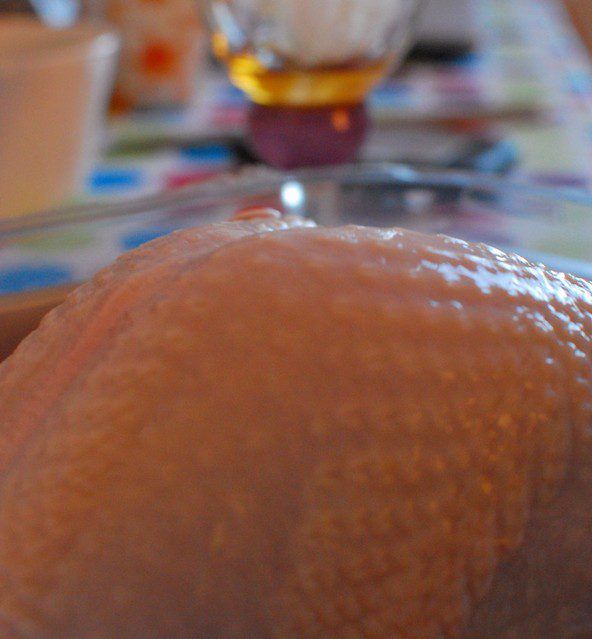
Image: CC BY-SA 2.0, distillated, via Flickr
Rest the Meat before Carving
Do not carve the turkey as soon as you take it out of the oven. Instead, let it sit for around 20 minutes or so before you get to prepping it for the table. This trick allows the juices, which are concentrated in the center because of the oven’s heat, to redistribute better through the meat.
Favorite Family Recipes
Armed with this guide on how to cook a turkey, and up-to-date on some of the best tips to get a turkey well-cooked, you can now try your hand at some recipes. We’ve outlined three of them, and included links to help you understand each recipe better.
Herb Roasted Turkey
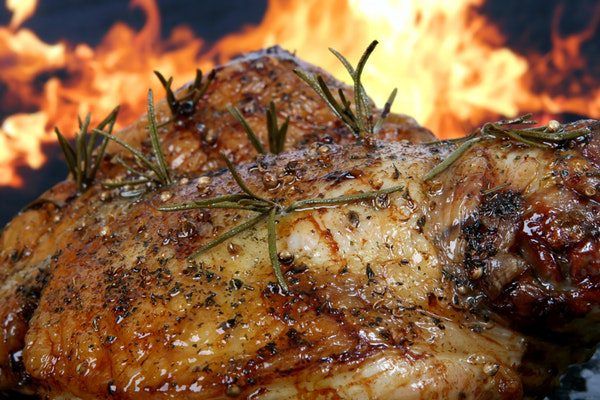
Image Source: Pexels.com
This is one of the most basic turkey recipes. It gives you the freedom to choose a stuffing of your choice and only dictates that you add some onions and herbs like thyme and bay leaves into the cavity. The turkey breast is coated with butter, and the whole meal is topped off with some white wine.
Link to Recipe
Orange and Tarragon Roast Turkey
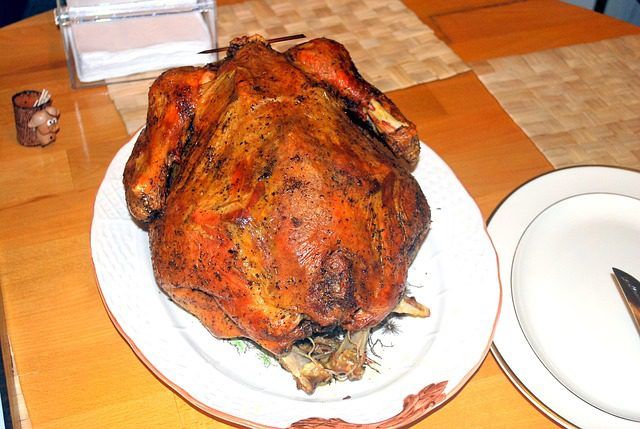
Image Source: Pixabay.com
This is a bit more complex to make, but when you get it right, the mix of flavors is worth the effort. The ingredient list is simple, and all you need to do is flavor some butter with orange zest, tarragon, and garlic. The skin and the layer above the meat are coated with this flavored butter while the cavity is stuffed with onions and oranges.
Link to Recipe
Cider Roast Turkey
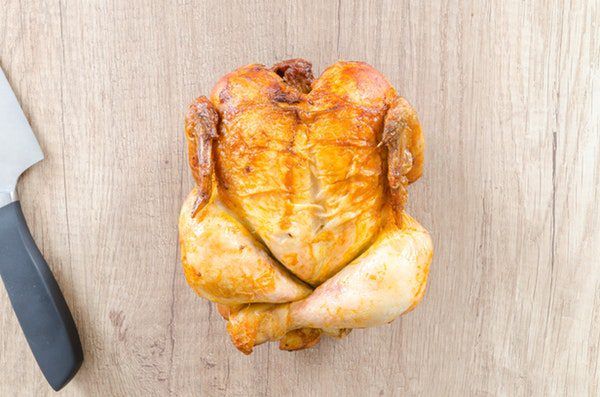
Image Source: Pexels.com
With a butter-coated breast and a gravy flavored with leeks and carrots, a cider roast turkey can be fairly easy to make. As is evident from the name, this roast chicken sits in a sauce that includes cider and chicken stock, both of which add more layers of flavor to the well-seasoned meat.
Link to Recipe
Conclusion
That just about wraps up this guide on how to cook a turkey. Once you get a hang of the basics, it’s highly likely that you’ll figure out a few tips and tricks of your own. And as you go along trying your hand at one recipe after the next, you’ll find that the process of cooking a turkey is almost as enjoyable as the end result.
Featured Image Source: Pixabay.com



